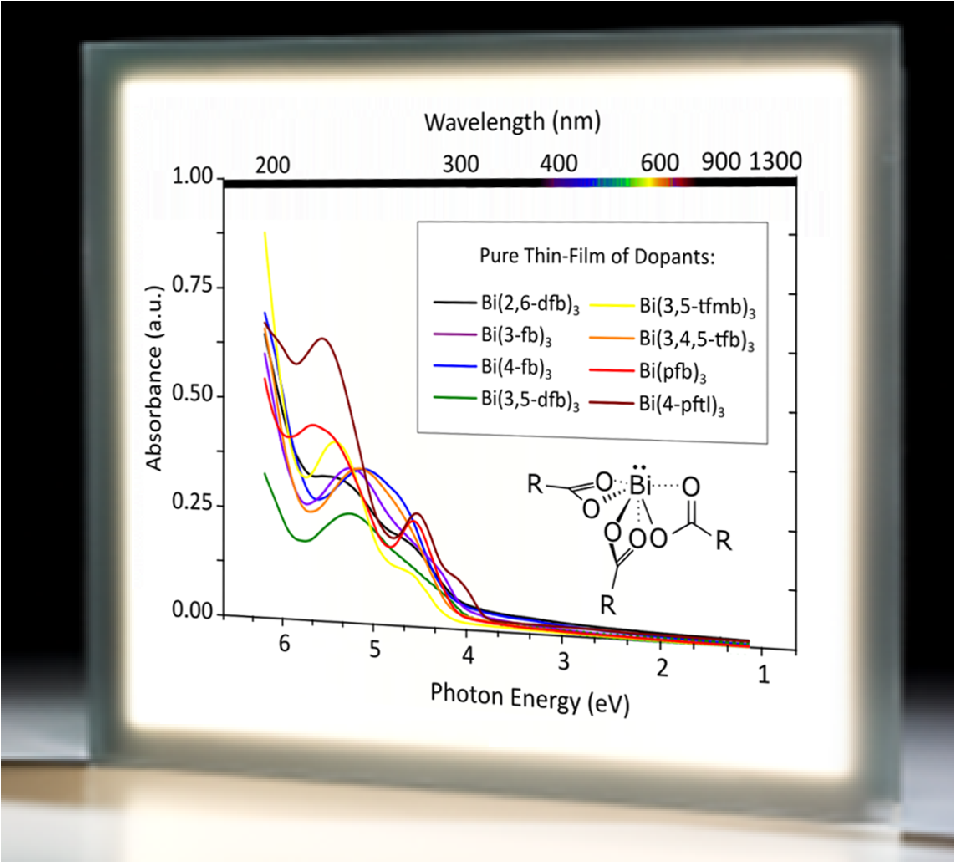









 Abstract: Ten new efficient p-dopants for conductivity doping of organic semiconductors for OLEDs are identified. The key advantage of the electrophilic tris(carboxylato) bismuth(III) compounds is the unique low absorption of the resulting doped layers which promo tes the efficiency of OLED devices. The combination of these features with their low fabrication cost, volatility, and stability, make these materials very attractive as dopants in organic electronics.
Abstract: Ten new efficient p-dopants for conductivity doping of organic semiconductors for OLEDs are identified. The key advantage of the electrophilic tris(carboxylato) bismuth(III) compounds is the unique low absorption of the resulting doped layers which promo tes the efficiency of OLED devices. The combination of these features with their low fabrication cost, volatility, and stability, make these materials very attractive as dopants in organic electronics.
Pecqueur S., Maltenberger A., Petrukhina M. A., Halik M., Jaeger A., Pentlehner D., Schmid G.*

Abstract:
Schmid G., Pecqueur S., Halik M.

Abstract: Organic electronic is up to now the most promising technology in order to realize opto electronic devices suitable on flexible substrates, which can open new markets on plastic-based products. Nevertheless, to compete classic technologies on already exis ting markets, organic electronic needs to improve several of its electrical performances among others. Doping organic semiconductors is one strategy to optimize electrical conductivity on organic materials but is still very limiting compared to inorganic , and understanding the complex mechanism between dopant and organic semiconductor is a prerequisite for their optimization. Even if the experience shows classic dopants to be redox-active chemicals (Cs, Li, O2), the redox activity of some che micals is no prerequisite for doping. Despite its strong reducing property, Cr2(tfa)4 has been demonstrated to be a p-dopant for its Lewis acidity. Cr2(tfa)4 presents an air-sensitivity due to the redox-activit y of the core, which implies that the conception of Lewis acids and bases, stable under oxidizing or reducing conditions,can result in potential air-stable materials which would dope organic semiconductors by the formation of hybrid charge-transfer compl exes.
Pecqueur S., Halik M., Schmid G.
© 2019-2025 Sébastien Pecqueur